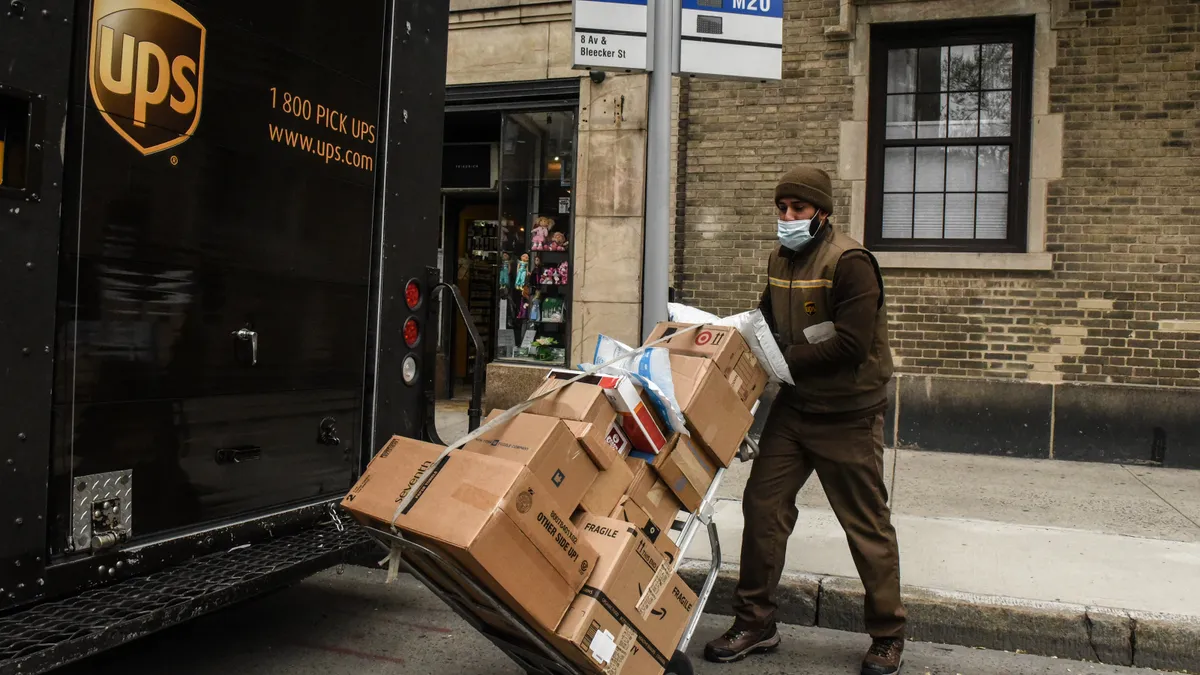U.S. consumers may be wrapping up their holiday gift lists.
More than half (55%) have started holiday shopping, and those shoppers are finished with nearly half (47%) their planned purchases, according to research from Pitney Bowes. Many of them are responding to retailers' messages to get going early, according to marketing automation platform Klaviyo, which said that, in the days before the Black Friday shopping weekend, its clients sent 13% more emails and 30% more text messages to their customers.
From Nov. 2 to Nov. 29, U.S. consumers spent $136 billion online, 9% more than last year, according to Salesforce. Among the winners were retailers selling apparel, where sales rose 58.1%, according to the Mastercard Spending Pulse Cyber Monday report, with single-digit growth online. Smaller retailers, with $1 million or less in revenue, also did well on Black Friday, attracting 36% more people than last year, who spent 58% more, Klaviyo found. Shopping at small businesses was a priority for 67% of holiday shoppers surveyed by research technology firm Lucid.
While Adobe Analytics found a 1.4% year-over-year decline in digital Cyber Monday sales to $10.7 billion, Salesforce clocked a 3% increase to $12.3 billion and Mastercard found an 8.7% gain, as of 3 p.m. Eastern Time. On Thanksgiving Day e-commerce rose 1% to $6.9 billion and on Black Friday it rose 5% to $13.4 billion, Salesforce also found.
Several researchers found discounts to be lower compared to last year, with BMO Capital Markets analysts reporting that the percentage of items on sale was down about 600 basis points, although they also found that the number of sale SKUs they track was about 15% higher on Cyber Monday compared to last year.
With fewer discounts, coupled with inflation in other expenses, consumers appear to be turning more to financing options including buy now, pay later. Adobe found BNPL services revenue to be up 21% year over year, with orders up 1%.
The weekend showed that, despite more consumers' willingness to venture out and shop in store, foot traffic hasn't reached levels from before the pandemic, according to research from Placer.ai, which found visits to be down 8.5% at indoor malls and 9.2% at outdoor malls compared to 2019. That may also be keeping curbside pickup popular, as it was used in 18% of all online orders on Cyber Monday alone compared to 20% last year, according to Adobe.
In all, during what Adobe calls "Cyber Week," (online spending from Thanksgiving Day through Cyber Monday), consumers shelled out $33.9 billion, down 1.4% year over year. E-commerce on Black Friday dropped 1.3% and Thanksgiving Day was flat, per that report.
"With early deals in October, consumers were not waiting around for discounts on big shopping days like Cyber Monday and Black Friday," Adobe Digital Insights Director Taylor Schreiner said in a statement. "This was further fueled by growing awareness of supply chain challenges and product availability. It spread out e-commerce spending across the months of October and November, putting us on track for a season that still will break online shopping records."















